Information Hub
Maintenance and Care
Will my iron jewellery rust?
When exposed to moisture, salt and other chemicals unprotected iron will rust. This is why we protect our pendants and other iron jewellery by one of two methods.
The black coloured pendants have been finished with a traditional method of heating the metal up and quenching it in oil while it is still hot. The black layer on top is a form of rust formed by the process of heating the iron, so it itself will not rust orange. The black layer is sealed in place by the oil. We also add an additional layer of our own made beeswax polish.
The dark, brass and blue hued surface is also formed by heat. The colored layer is very thin and unprotected rust can form. To keep the attractive colours protected we have used an metal sealant, almost like a clear varnish paint.
Both surface treatments can wear off along the edges in time and prolonged use. The exposed iron, grey metallic colour, will be prone to rusting if it is stored or kept in a damp place. If you plan to store the pendant for a longer time, keep it in a dry place and give it a fresh layer of beeswax polish.
For most people rust will not be an issue when wearing the pendant. The heat from the body tends to dry the pendant off before rust has a chance to form. You can even swim with the iron pendant on, as long as you remember to rinse any salt water off. If you wear the pendant all the time, take care to occasionally wax and oil the leather cord to protect it. With repeated washing the leather can go dry and brittle. Some after shower sprays and perfumes can shorten the life of the cord.
Because the appearance of iron jewellery will change with time and wear, I offer a refurbishment service, for as long as I have access to my workshop. The price is whatever the postage cost back to you is and any payment processing or sales fees accrued by the transaction. You can arrange to send a pendant or other piece of jewellery back to me and I shall restore the surface and replace the cord. I may ask you to verify your purchase if I cannot find it in my records. For this reason, please keep hold of the invoice that arrives with your purchase.
How to adjust my leather necklace?
To make the necklace longer, slide the knots back towards each other. Most of the time you can do this by pulling at the individual cords on the sides, but if the knots are tighter than usual, it may be better to hold onto the knots and move them individually.
Importantly! Please take care not to pull the knots right next to each other on the back, as it can be hard to shorten the necklace again. Leave at least half an inch between the knots.
How to look after my leather cord?
I do my best to source high quality cord for my jewellery. Regardless leather is a natural product and there is variability in strength and longevity.
To extend the life of your cord, especially when the necklace is worn all the time, it is important to keep the leather oiled of fed to stop it from drying. Dry leather becomes brittle and weak. Salt water, perfumes and after shaves, as well as soaps and shampoos all can dry the cord.
The simplest way is to oil the leather. You can use readily available olive or almond oil, but these don't penetrate the leather too well and can leave the leather feeling sticky. For best results look into thin speciality leather oils like neat's foot oil or mink oil.
There also are a variety of leather foods available, designed for leather care and maintenance. These are an excellent alternative.
Rub the oil onto the cord and pull it through your fingers. Then dry the surface through with cloth of paper towel until the cord doesn't stain.
What ever you end up using, make sure you are not allergic to anyof the ingredients.
If you cord snaps and you would like a replacement, contact me for details.
Does silver tarnish?
Most of our forged silver is Sterling silver. Sterling silver is 92.5% pure silver, with the rest usually being copper. The silver is hallmarked as a guarantee of its purity.
Silver will with time darken. When you don't want it to happen, it is called tarnished and when you do want it to happen it is called a patina. I purposely patinate many of my jewellery to highlight designs and hammer work. The pieces are then surface polished creating a higher contrast between the tarnished insides and recesses and the highlighted areas.
I include a silver polishing cloth with all my silver jewellery to allow you to keep the highlights polished. If the piece is heavily patinated, you can rub it with a mixture of bicarbonate of soda and soap. Rinse well and dry before using the polishing cloth to finish.
Should you want me to restore the original polish, please contact me for details.
